With any CRPG that has a complex TTRPG background like Rogue Trader or BG3, getting used to the combat system takes some time. In this Warhammer 40K Rogue Trader combat guide, I’ll walk you through the important points of grounded melee and ranged combat, as well as armor and momentum.
Warhammer 40,000 Rogue Trader Combat Tips Guide
There’s quite a bit to combat in Warhammer 40,000 Rogue Trader, and while this guide isn’t exhaustive, it’s meant to explain many of the most important mechanics in the game. And if you take damage at any point, be sure to heal. Don’t let those Wounds fester into Injuries and Traumas.
How Ranged Combat Works
Ranged Combat is fueled by your Ballistic Skill and Perception. The base value you’ll need to roll on your d100 to hit is “30+(Your Ballistic Skill Score)” or lower. For example, I’m building an Operative sniper with a BS of 50, so I’ll need to roll 80 or below for a chance to hit. The score you need to roll is reduced by half if you’re shooting beyond your weapon’s outlined range.
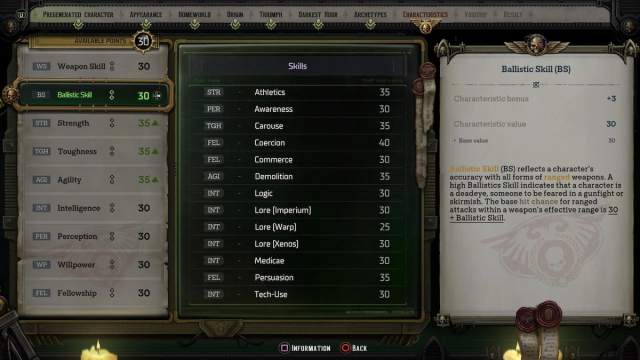
From here, your target will try to Dodge. To avoid your shot, they’ll need to roll “30+(Their Agility Score)” or below. The trick is that your Perception skill is deduced from that roll. For example, my Operative sniper has a Perception of 40, so I’ll impose that penalty on the enemy’s Dodge roll. Let’s say they have an Agility of 30, so they’ll need to roll 20 or below.
Note that Cover plays a crucial role in ranged combat. Any sort of light barricade or object will provide Half Cover for you, which gives you an additional 35% to Dodge an attack. Full barricades or walls provide Full Cover, marked by a skull icon, which gives you a whopping 60% to avoid getting hit.
Ranged Attack Shot Types Explained
If you go into your Inventory and hover over a weapon, it’ will tell you whether that weapon’s shooting mode is Single Shot, Burst Shot, Area Shot, or a specific combination of the three. This is in the form of a small icon at the bottom of the weapon’s stat. These three shooting modes follow these rules:
- Single Shot: The attack roll is determined as described above. If your ally is between you and the target or directly behind the target, they have a chance to be hit with friendly fire. Example weapons: Sniper Rifles and Revolvers.
- Burst Shot: Weapons with this capability allow you to attack in an area instead of a single target. You’ll designate a cone originating from your character and fire off several attacks equal to your weapon’s Rate of Fire stat. Instead of determining a to-hit chance, a test is made to determine the trajectory of each shot (based on BS), which will automatically hit enemies or allies in that trajectory. Furthermore, each shot has its own separate Dodge roll. Example weapons: Lasgun, Laspistol, and Bolter.
- Area of Effect: Area attacks are similar to Burst Shots except the target can only Dodge if they can avoid the attack’s area in 3 Cells or less. Furthermore, even if the roll-to-hit fails, the targets of the attack still suffer a grazing hit which is 50% of the original damage. Example: Flamethrower.
As always, be careful with nearby allies to avoid friendly fire. I found that the Guardsman Archetype’s Called Shot ability greatly helps with this.

How Melee Combat Works in Rogue Trader
If you’re going for a melee Archetype like the Warrior or just want to utilize melee combat in general, you’ll want high Weapon Skill, Strength, and Agility as your main stats. Unlike Ranged Combat, attacks in melee are a guaranteed hit. That said, enemies will try to Dodge or Parry, whichever one is more beneficial for them.
- If the enemy tries to dodge, their Dodge roll will be reduced by half your Agility.
- If they try to Parry, a Weapon Skill test is rolled, and if they succeed, your attack will do no damage. This roll can be modified by weapon stats. For example, I found that sword weapons make you more effective at Parrying.
Lastly, there is a flanking system in Rogue Trader called Melee Superiority. You’ll get a +10 to Weapon Skill for each ally with a melee weapon next to your target. This goes both ways by giving you a +10 to Parry chance for each melee ally standing next to you while you’re being attacked.
Melee Combat Tips and Strategies
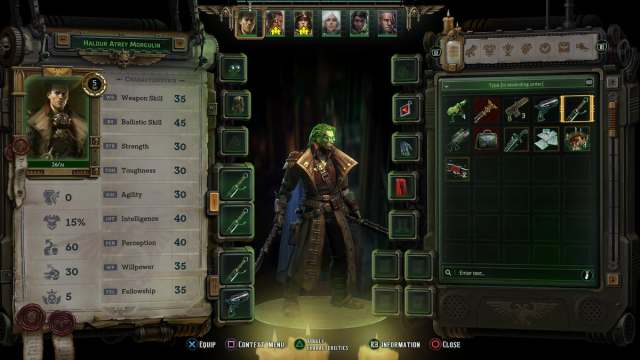
Here are some useful strategies when engaging in melee combat:
- Single Target & Area Attacks: Similar to some ranged weapons, melee weapons also have two attacking modes. You can strike a single target for 1 Action Point or use 2 to strike three cells in front of you.
- Attacks of Opportunity: You can lockdown ranged characters by engaging them in melee combat. Enemies can’t use ranged weapons while you’re in melee with them, and if they try to move, they’ll suffer an Attack of Opportunity. This is a special free-reaction attack you’ll perform automatically if someone tries to leave melee combat with you.
- Dual Wielding: You can equip two melee weapons in your right and left hand and pick up the Dual-Weapon Combat talent. This will allow you to attack twice in a single round with each weapon.
Note that locking down ranged enemies by engaging them in melee doesn’t work if they’re wielding a shotgun or a pistol.
Rogue Trader Armor and Damage Explained
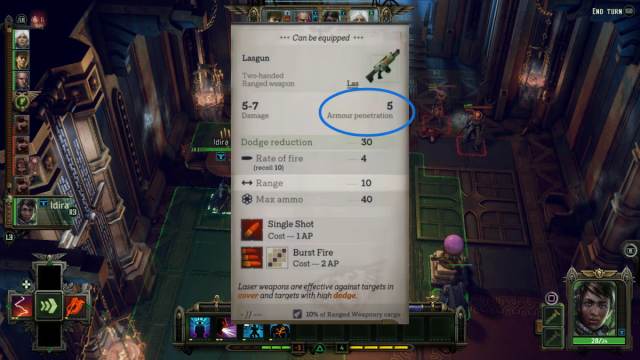
Successfully hitting enemies in melee and ranged combat inflicts damage based on your weapon’s damage stat. There are a number of ways to reduce this inflicted damage through Armor. Defensive boosts come through various pieces of armor, but most commonly through your breast piece. Armor reduces damage through:
- Armor Deflection: This is a flat number subtracted from the initial damage you take.
- Armor Percentage: This is the total percentage of damage reduction your armor grants you. For example, If you have 30% Armor and take 30 damage, you’ll take 20 damage instead.
Some weapons have an Armor Penetration stat, which is a number that reduces your total Armor Percentage.
A Primer on Momentum
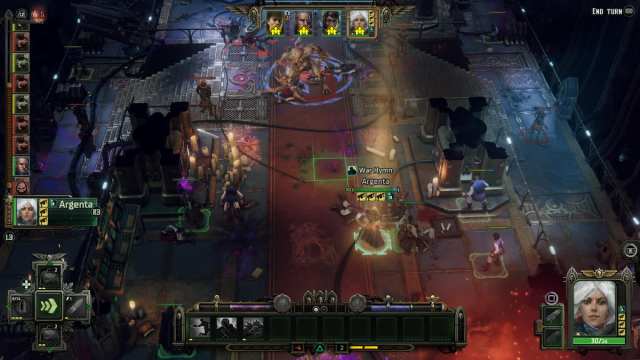
I have a larger guide on Momentum here, but in a nutshell, it’s the morale system in Rogue Trader, represented by a flat number that starts at 100 at the beginning of combat. It’s increased over time on each of your character’s turns based on their Resolve stat. It also increases when your character’s score kills. That said, it drops drastically when one of your characters drops to 0.
Once it reaches 175, any of your party members will be able to use their Heroic Act ultimate ability which spends Momentum. On the other hand, if Momentum drops below 25, the Desperate Measures ability becomes active which is similar to a Heroic Act. However, Desperate Measures always come with a negative effect. I found that my Warrior’s Desperate Measures stuns them for 2 rounds and the Operative’s increases the cost of their attacks.
While there’s still more to learn, our Warhammer 40K Rogue Trader combat guide should give a strong foundation to make it through the rest of the game. We hope it was useful in explaining some of the basic math and d100 rolls behind the game’s melee and ranged attack systems. For more articles like our Psyker guide, check out our WH40K Rogue Trader tips hub.

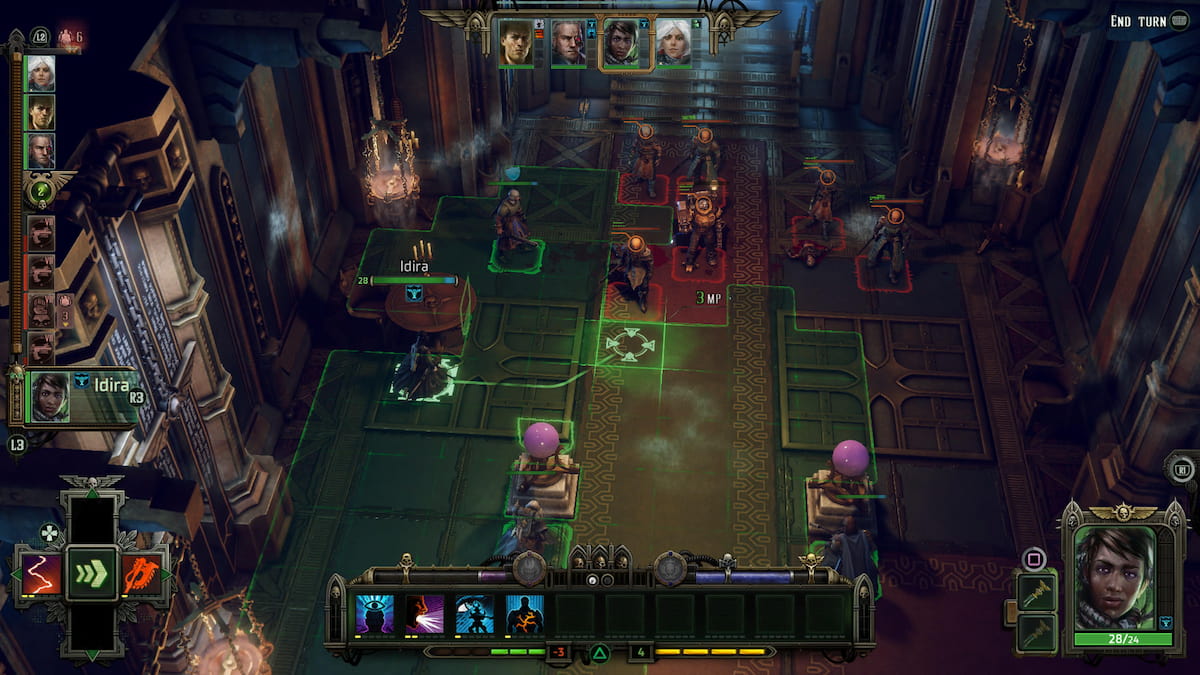

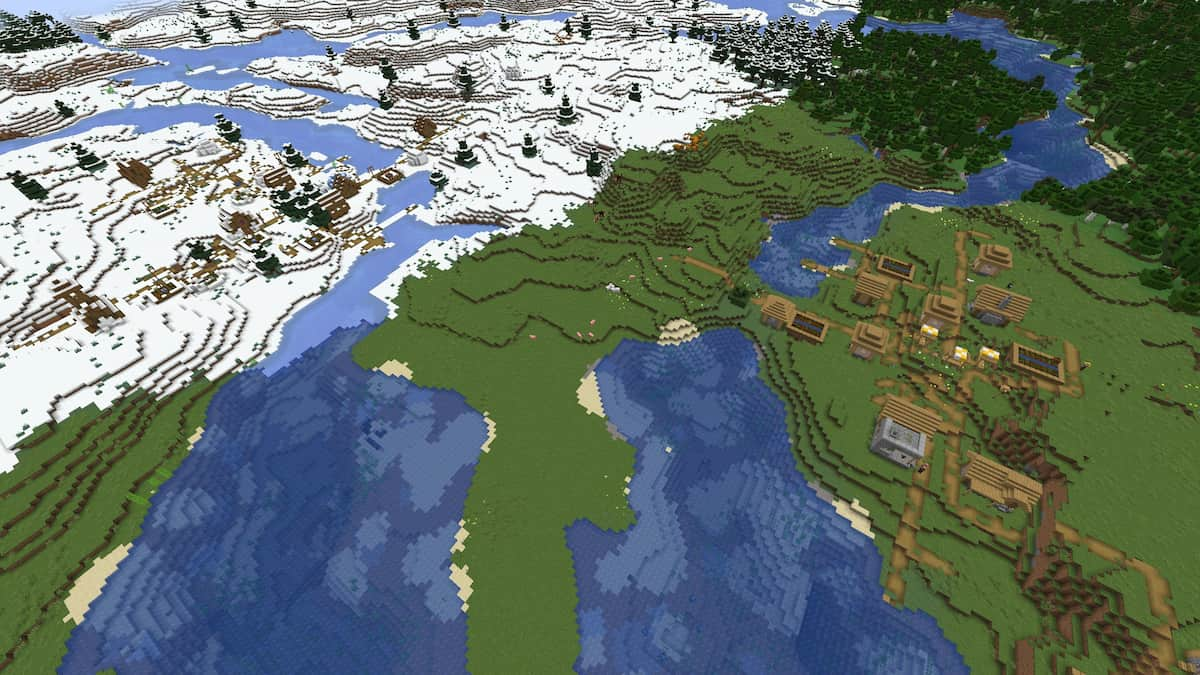



Published: Dec 7, 2023 11:15 am